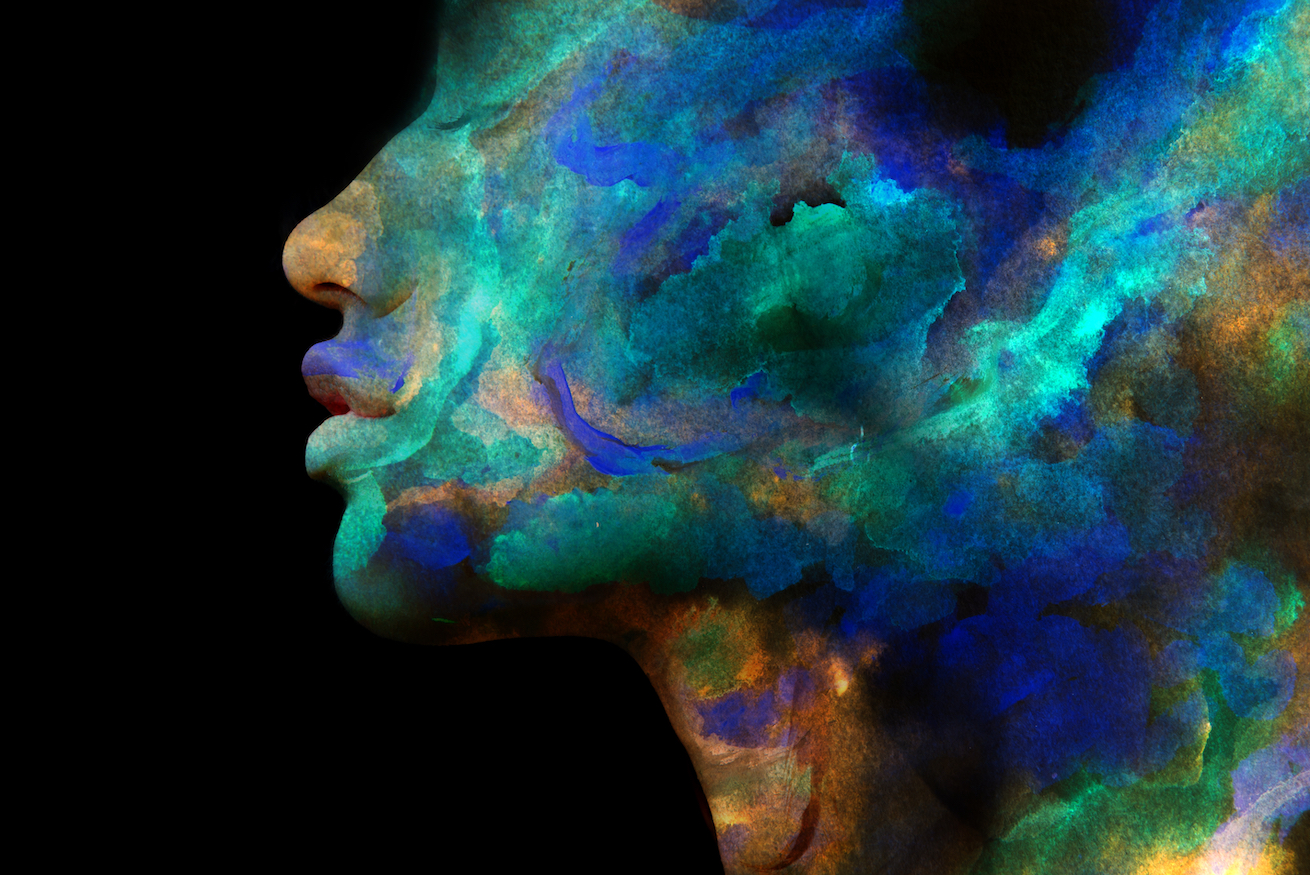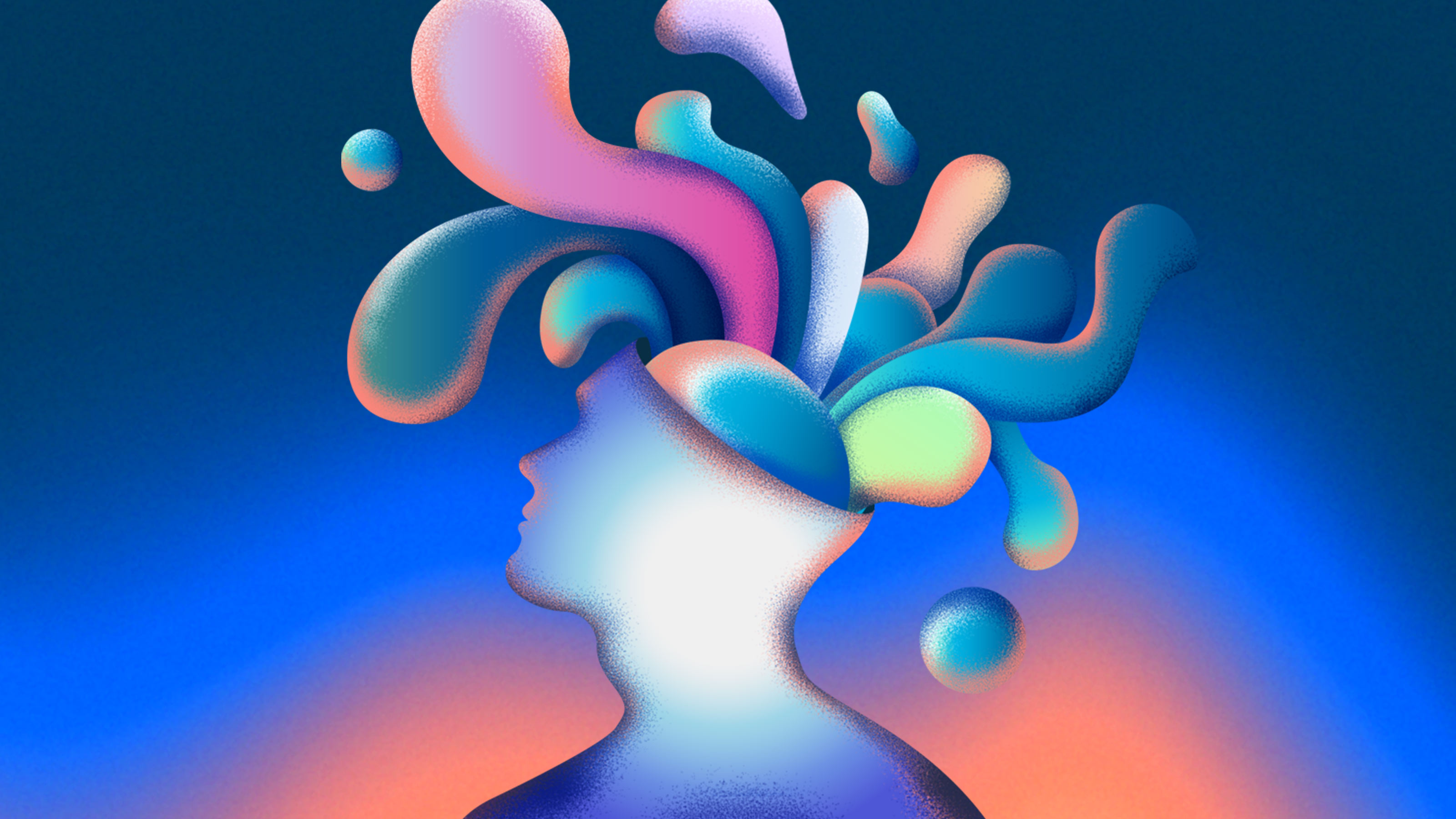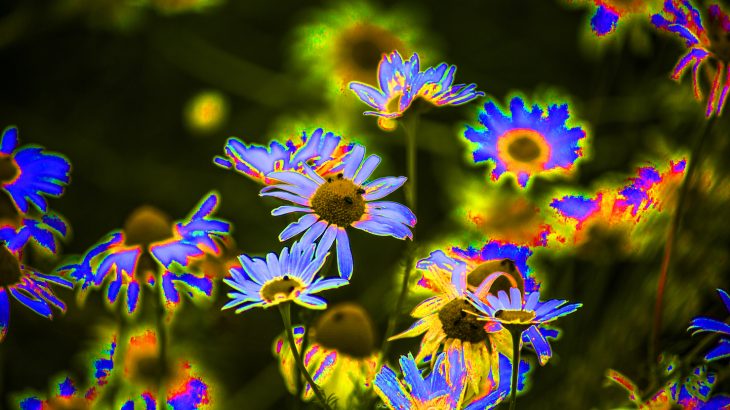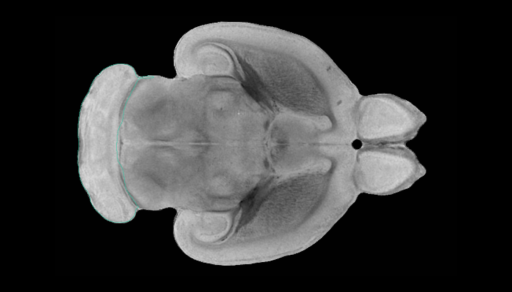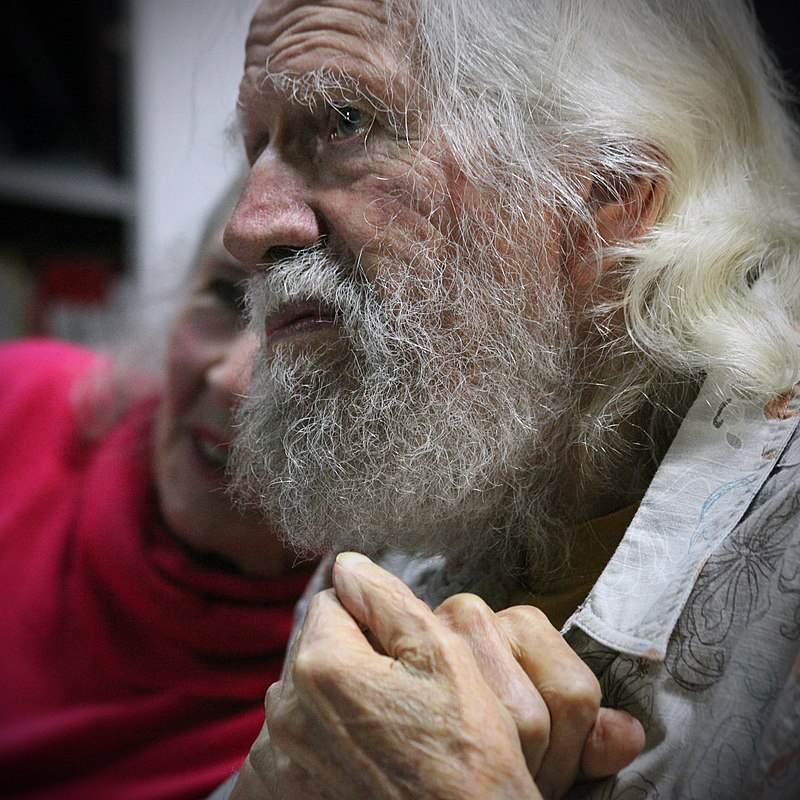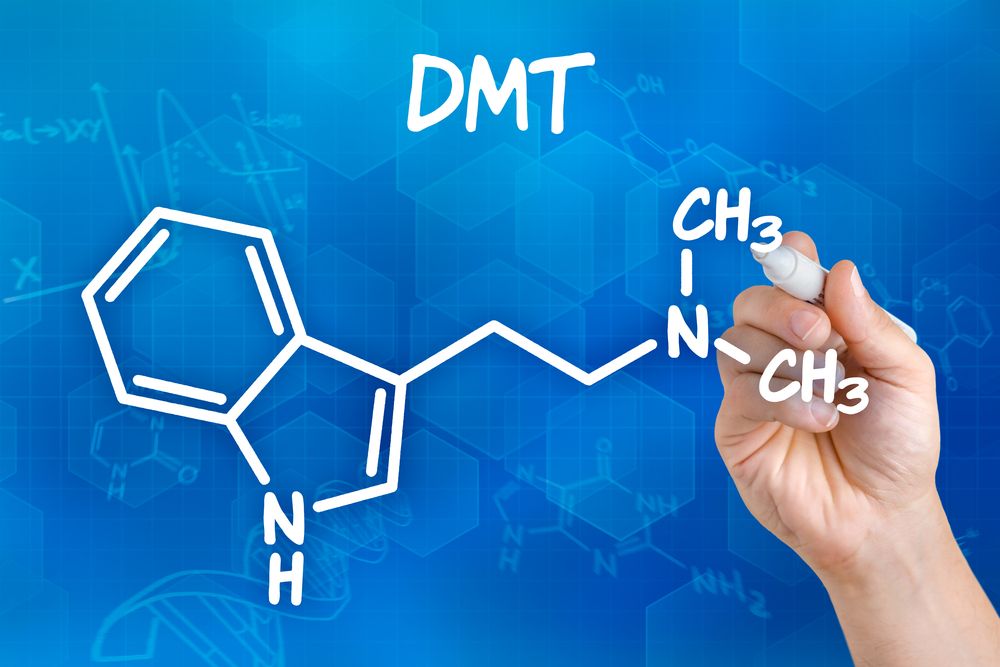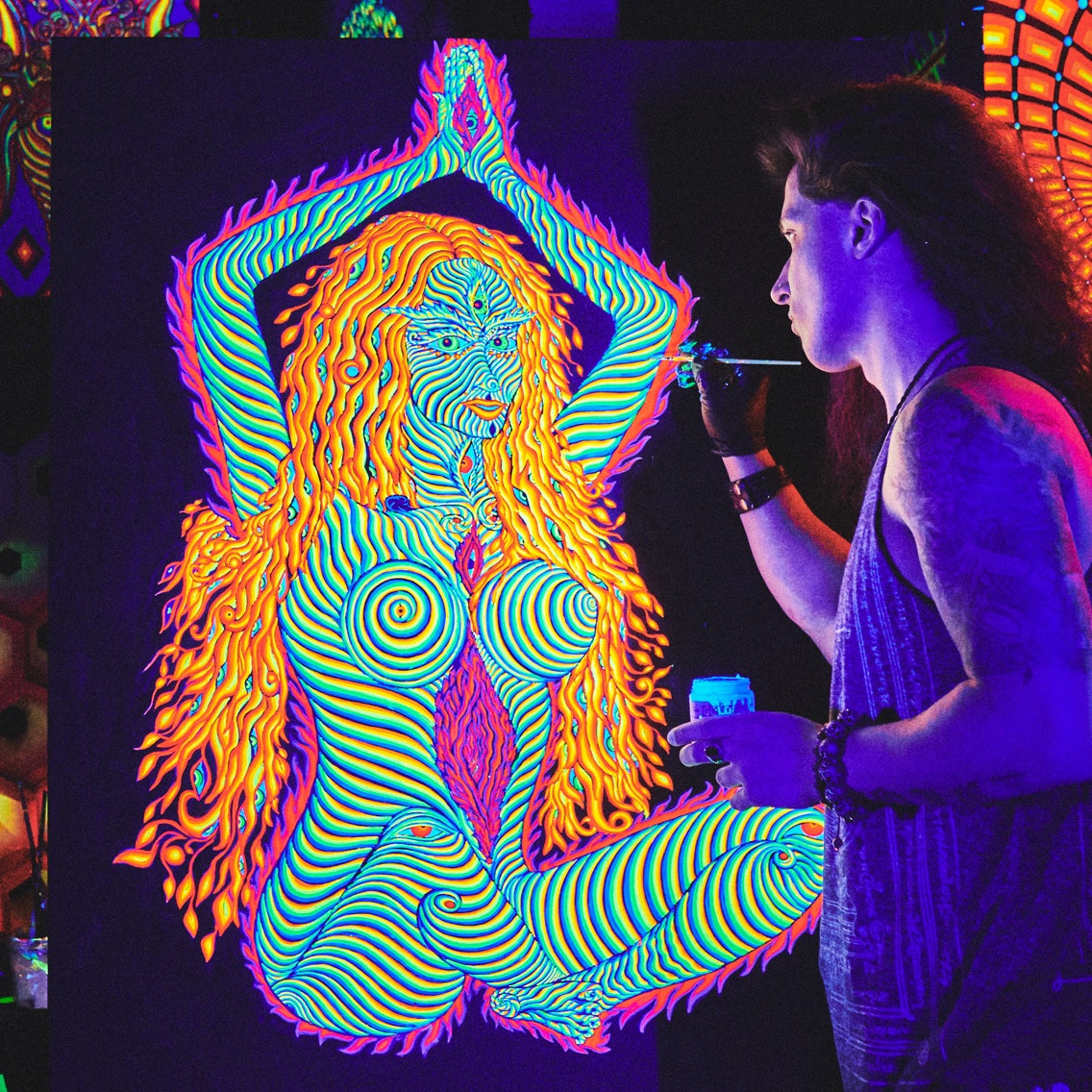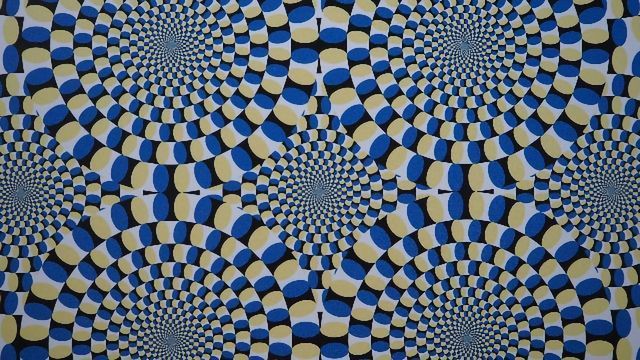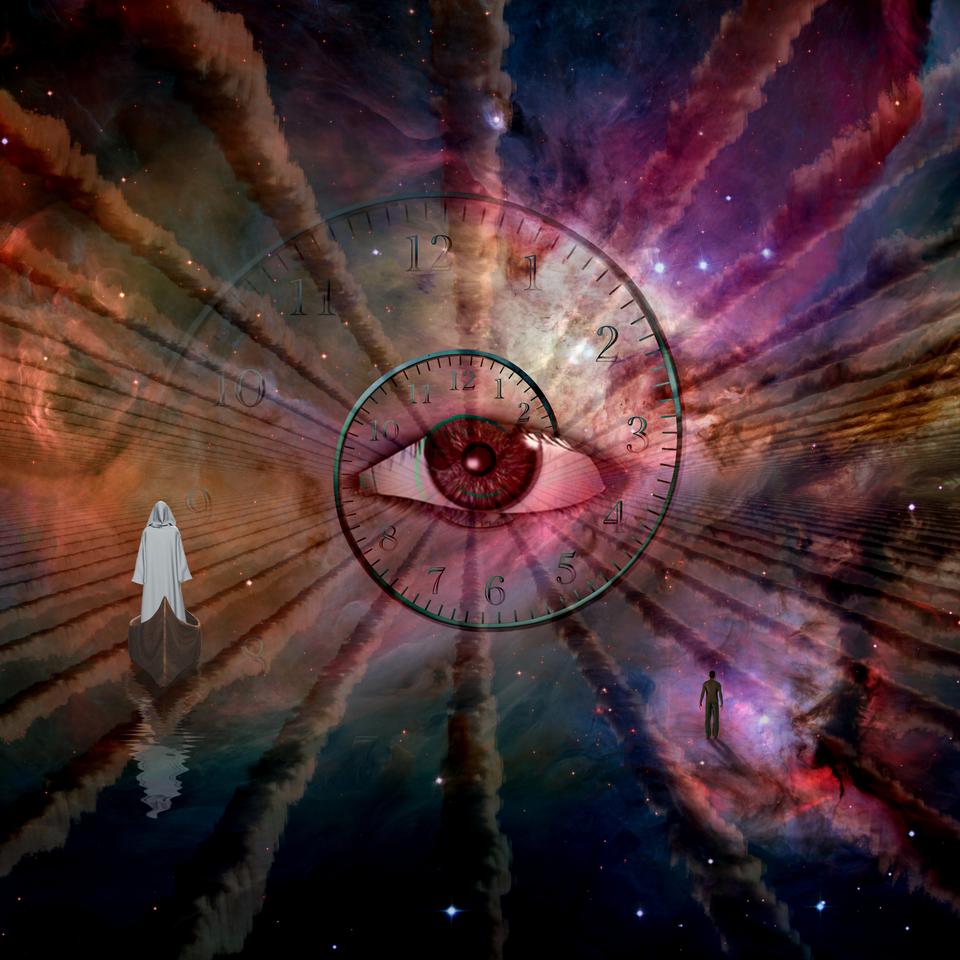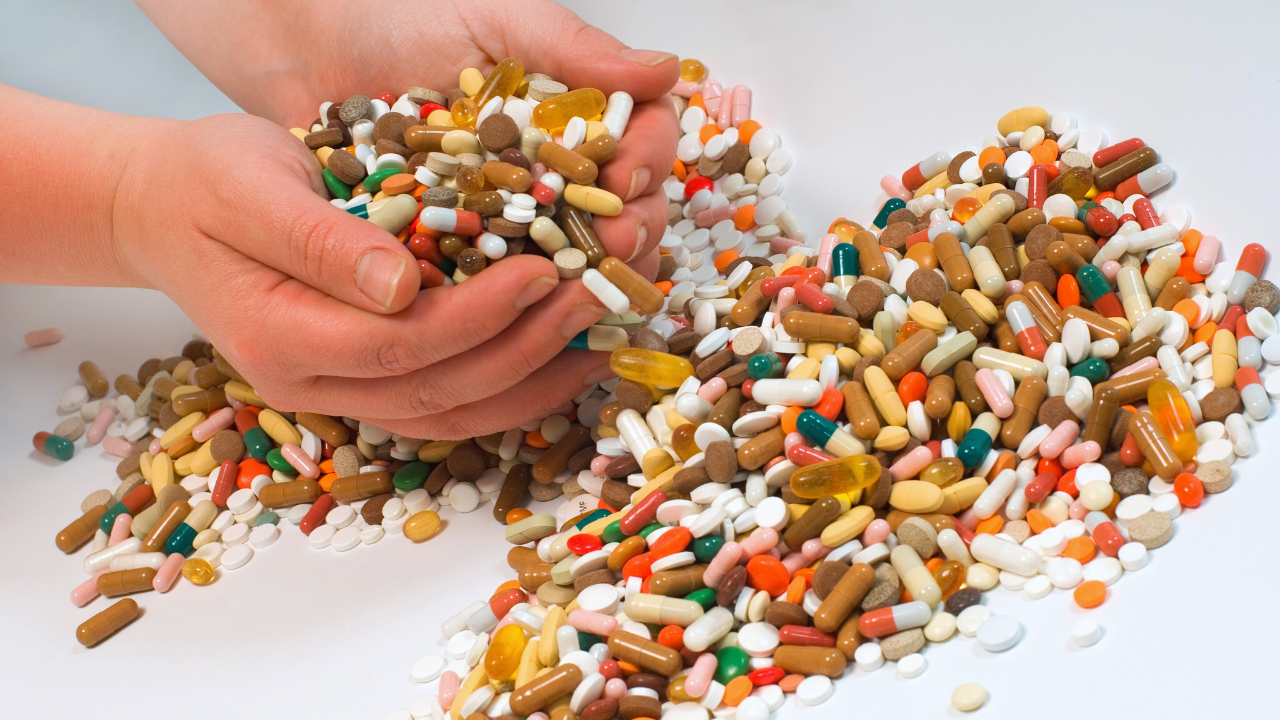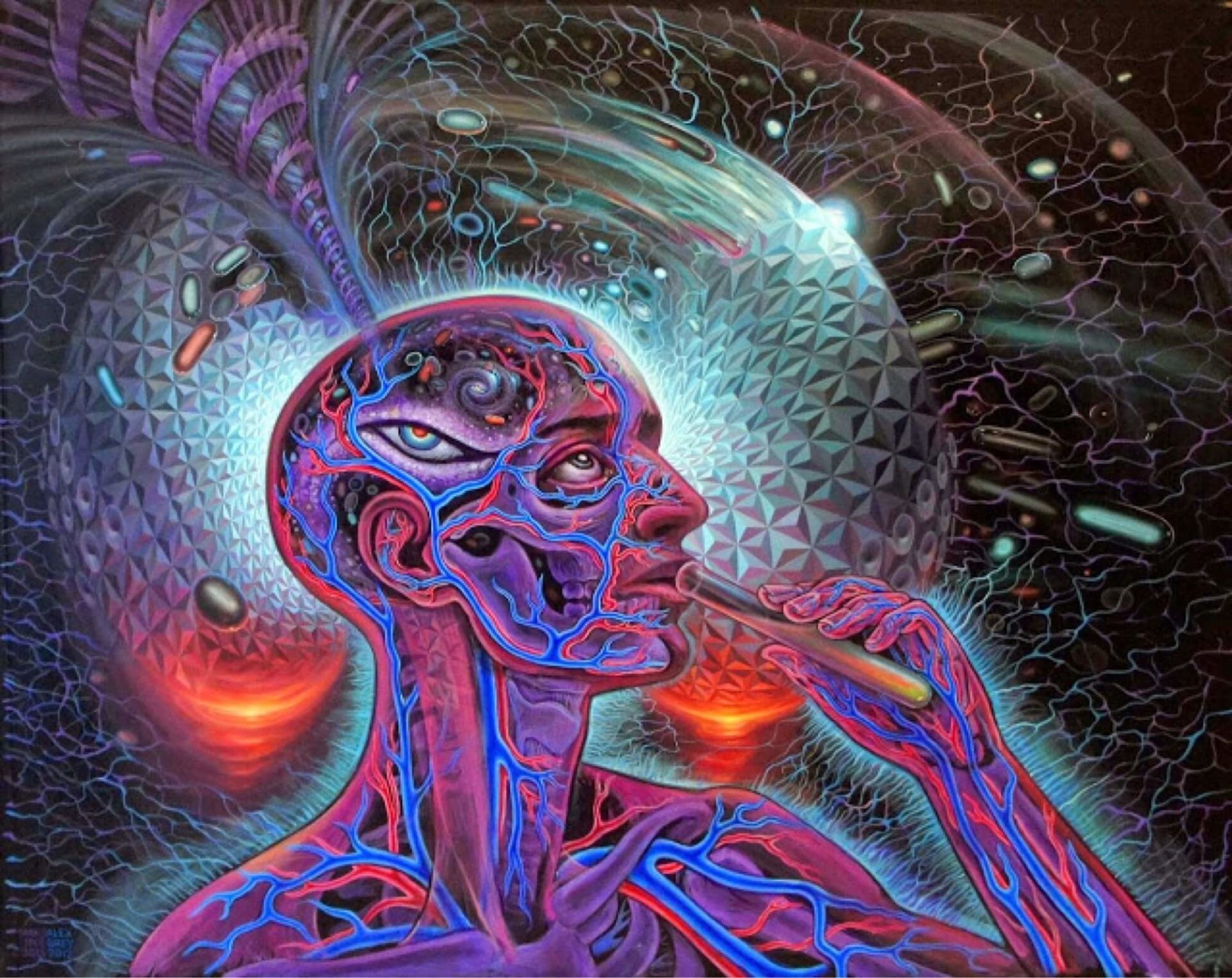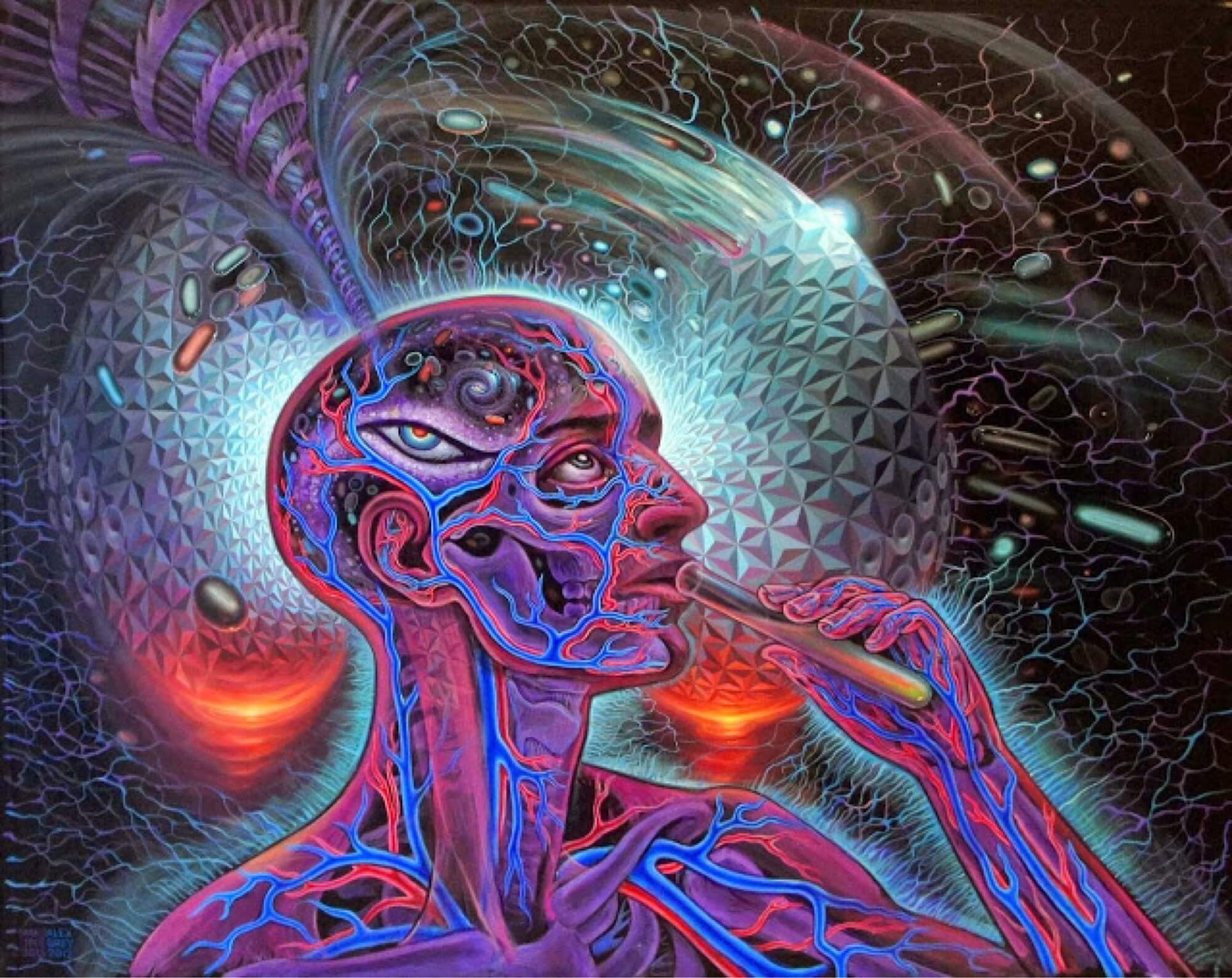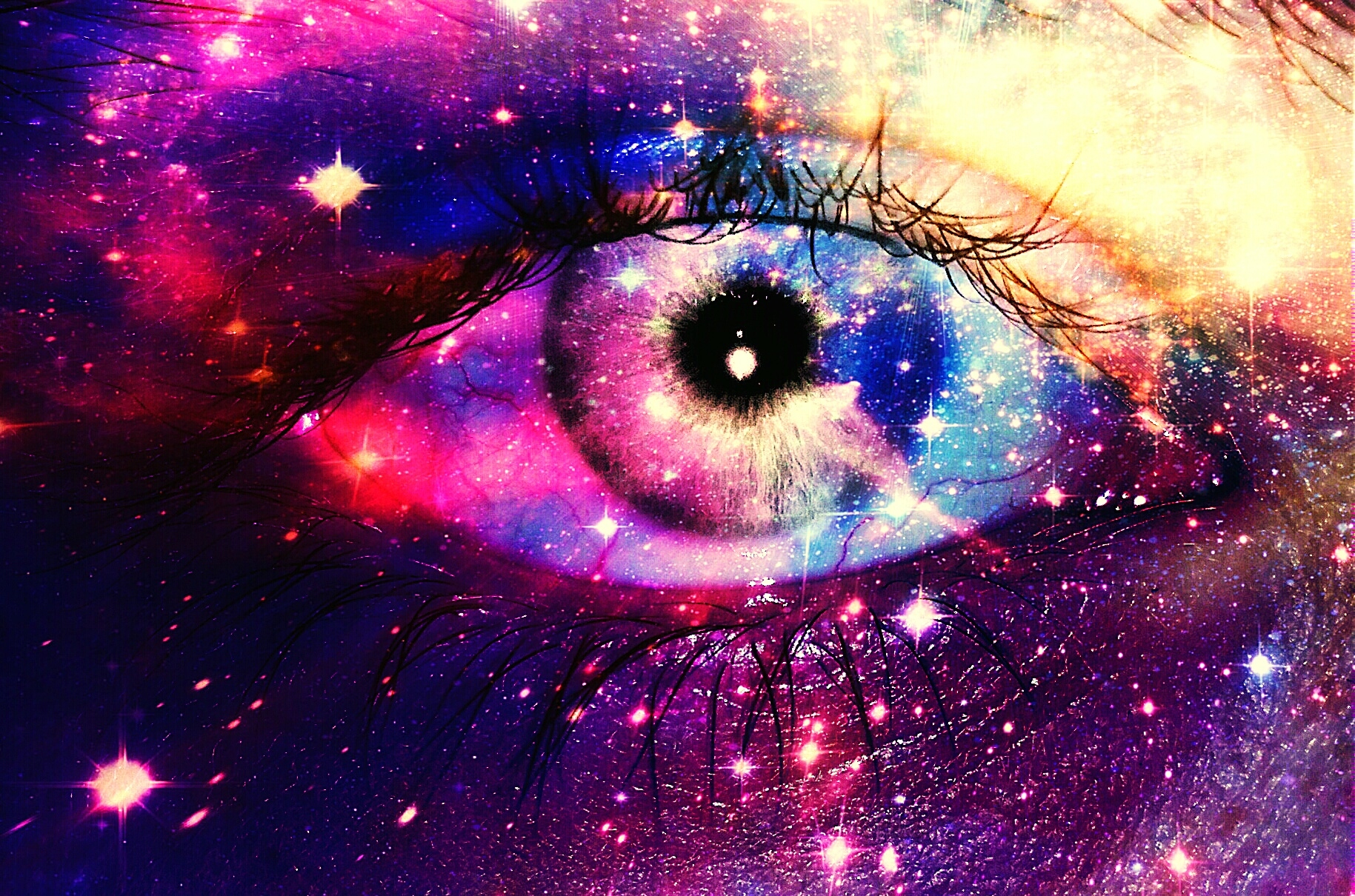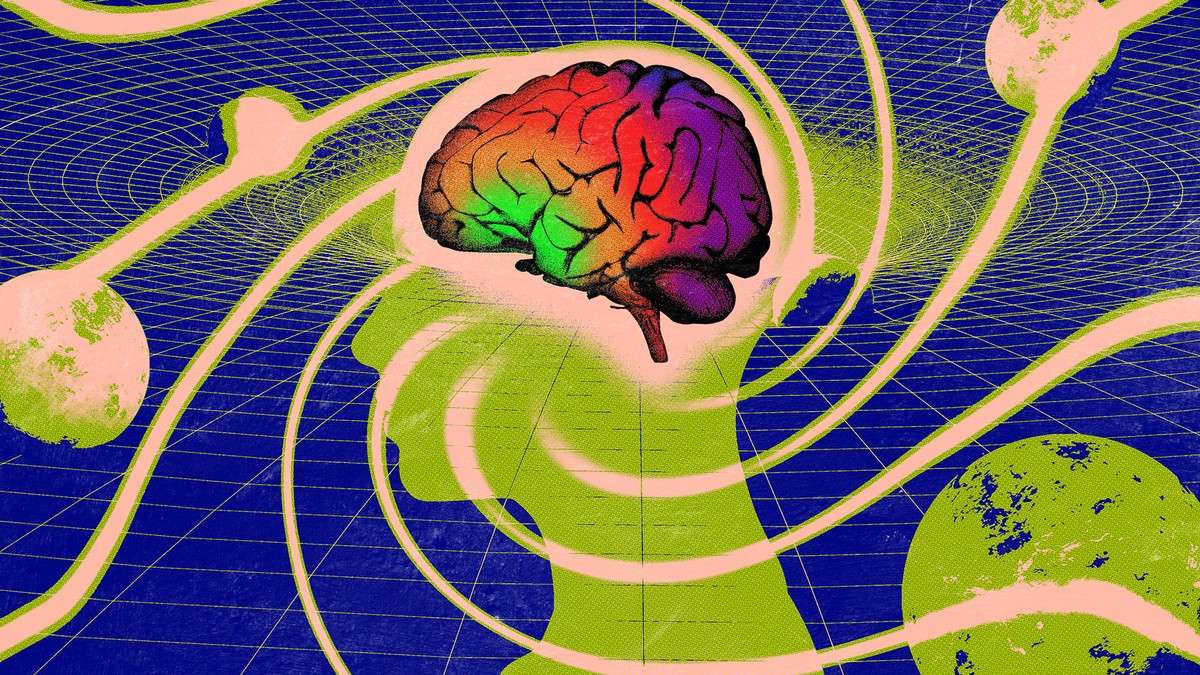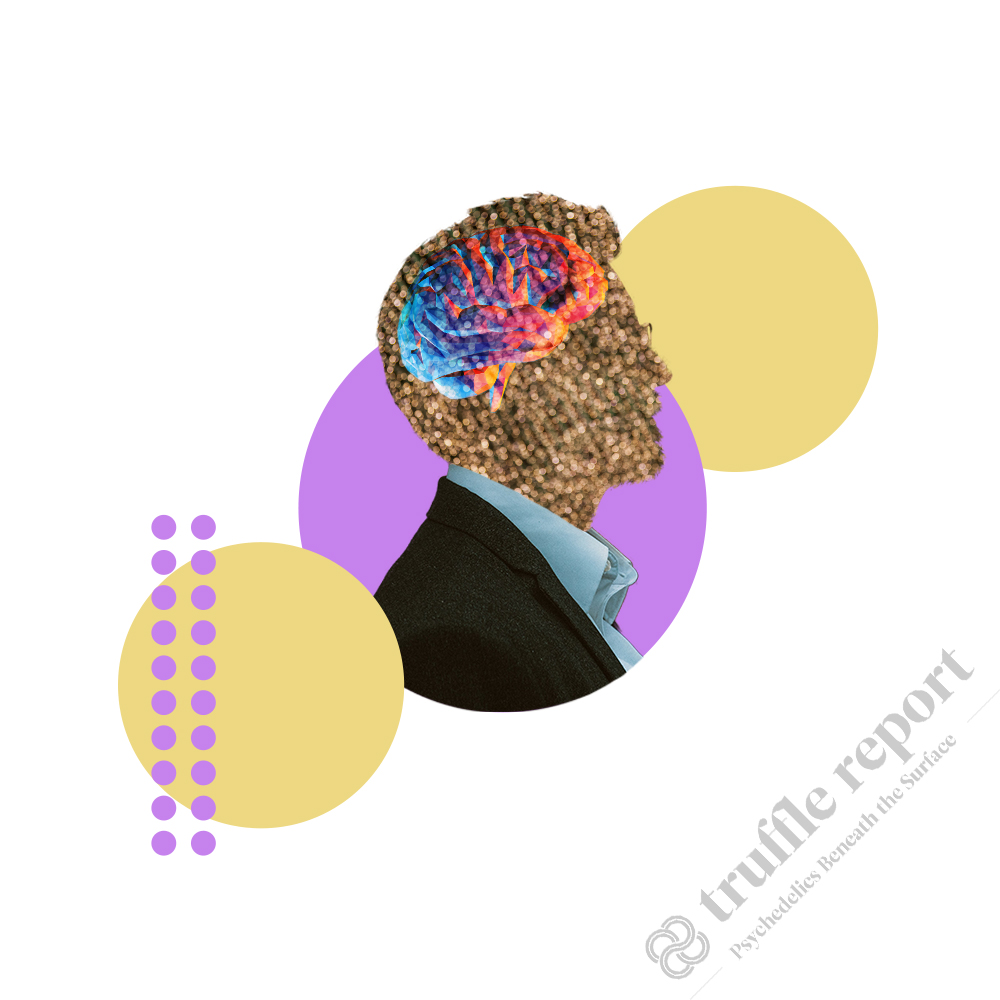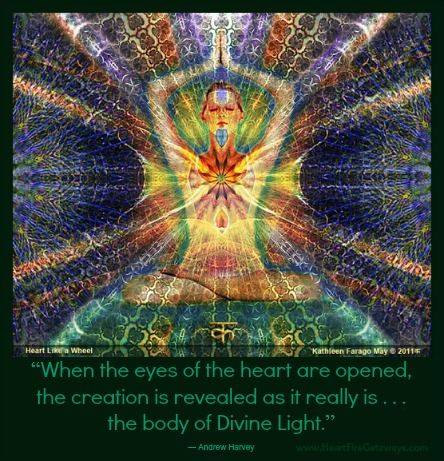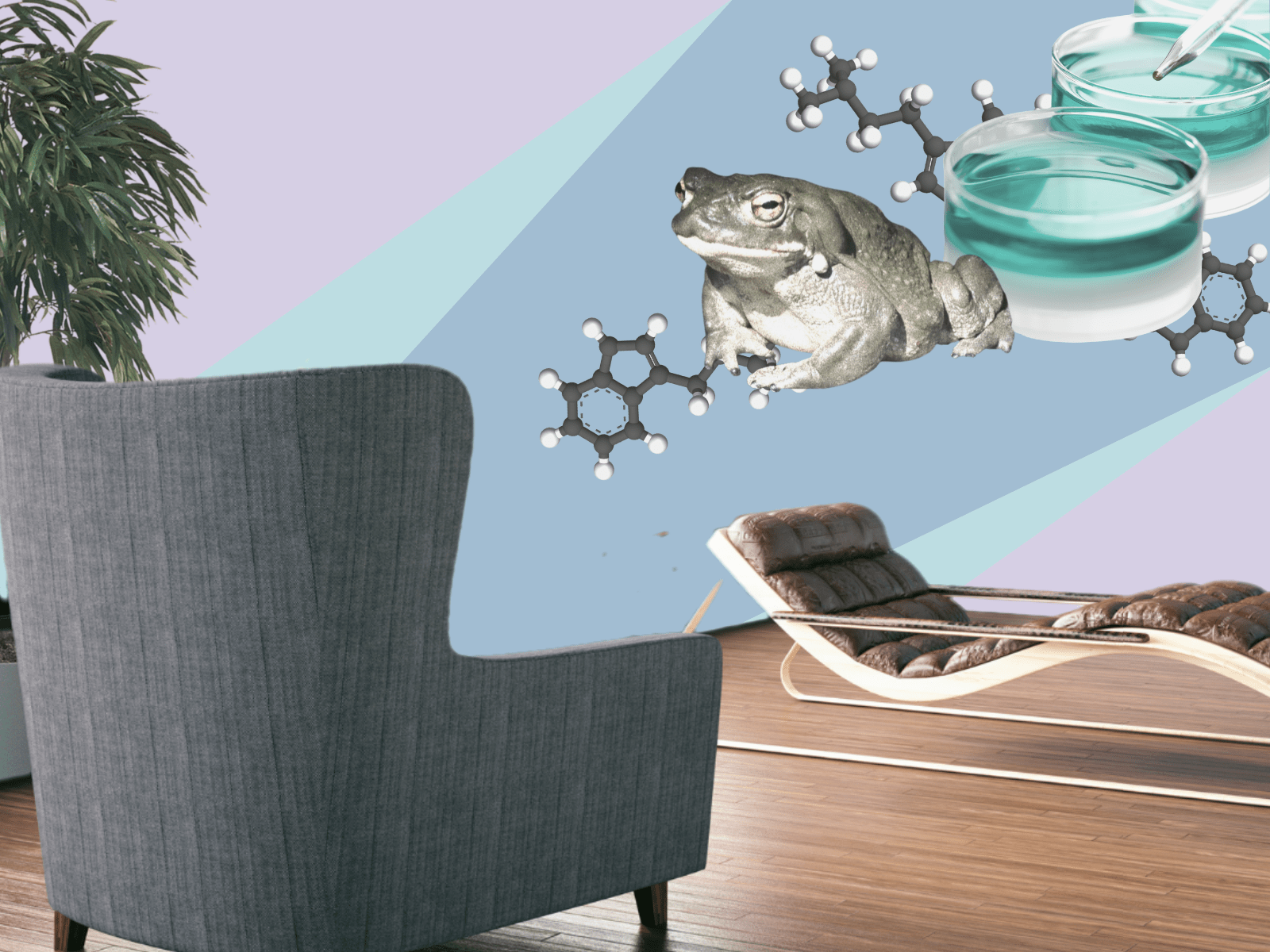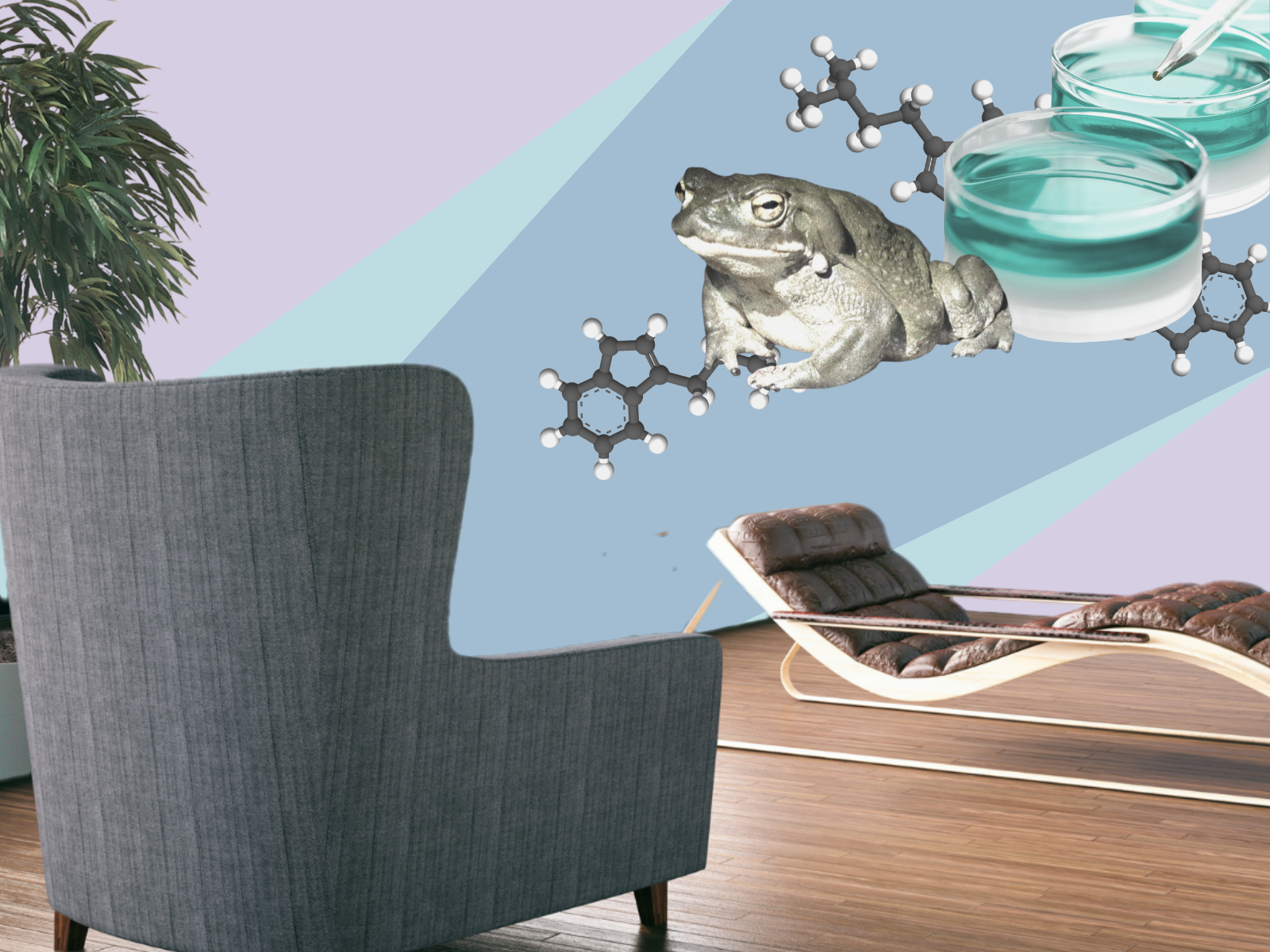A Beginners Guide to DMT*
Everything to know about the hallucinogenic “spirit molecule”—common side effects include seeing aliens and finally connecting with the universe.
by Markham Heid | VICE | 2 Feb 2022
When Jonathan Bell first tried DMT, he was already well-acquainted with psychedelics—at 34, he had taken acid and used mushrooms on dozens of occasions. Even so, he was staggered by the intensity of his first DMT trip.
“It’s such a bungee jump into a new realm that it can be quite disorienting,” said Bell, now 44, who lives in Denver. Since that first trip, he estimates that he’s used DMT hundreds of times.
As he thought about what it’s like to take the drug, he made a motorboat sound with his lips. “It is a completely immersive experience of seeing and feeling,” he finally said.
“Within the space of a breath, you go from regular waking consciousness to something wholly different.”
Describing what any drug “is like” can be difficult. But users say the profundity and variety of the DMT trip makes it especially difficult to put into words. The late biochemist Alexander Shulgin was an early drugs-as-therapy pioneer. In a 1997 book that he wrote with his wife and collaborator, Ann Shulgin,
he described one of his personal experiences with inhaled
N,
N-Dimethyltryptamine, or DMT.
“I was being destroyed—all that was familiar, all reference points, all identity—all viciously shattered in a few seconds,” he wrote.
“I couldn’t even mourn the loss—there was no one left to do the mourning. Up, up, out, out, eyes closed, I am at the speed of light, expanding, expanding, expanding, faster and faster until I have become so large that I no longer exist.”
Shulgin’s account touches on several hallmark features of the DMT experience, including the rapid onset and the overwhelming sense of one’s self and identity evaporating into something grander and more intimately enmeshed in the fabric of the universe.
While DMT is less well-known than other hallucinogens, some consider it the
ur-psychedelic—the alpha and omega in any true psychonaut’s arsenal of mind-expanding substances. It’s often referred to as an “entheogen,” or a substance that can facilitate divine or spiritual experiences. It’s the main psychedelic (significantly diluted) in Ayahuasca brews. Some refer to it as the “god molecule.”
“It’s sometimes described as literally being shot off into DMT space,” said Roland Griffiths, a professor of psychiatry and neuroscience at Johns Hopkins University. Griffiths is the founding director of his university’s
Center for Psychedelic and Consciousness Research who has published
research on DMT. He said the drug produces “a profound shift in conscious experience.” Not long ago, this may have sounded like loopy hippie hyperbole, but Griffiths is one of the world’s leading experts on the use of psychedelics as medicine, and he said the neurological research on DMT suggests that it could provide real psychological benefits among people with conditions such as depression and anxiety—a view that some recent clinical trial data support.
And then there’s the fact that DMT has been found to occur naturally in the human brain. No one can say with certainty what it’s doing there, but some researchers have speculated that it may underlie some of neuroscience’s more inexplicable phenomena—including some aspects of near-death experiences.
So what does this mean for you, a layperson who’s curious about DMT or possibly even curious about
trying DMT? Here’s what we know for sure about this relatively mysterious, but definitely intense psychedelic.
What is DMT?
N,
N-Dimethyltryptamine is an organic compound found in many plants and, in lesser amounts, in the nervous system of humans and other mammals. Chemically, DMT is related to serotonin, melatonin, and other neurotransmitters that affect core elements of the human experience, including mood and memory.
Like LSD, peyote, psilocybin, and mescaline, DMT is considered a “classic psychedelic,” meaning, human beings have long experimented with its psychotropic properties—for at least several hundred years, said Griffiths. “All the classic psychedelics have different effects and onsets and durations of action,” he explained. “But they all share a principal site of action, which is the serotonin 2A receptor.”
DMT, like these other classic psychedelics, is
a serotonin 2A receptor agonist, which means it binds to these receptors and induces neurochemical shifts that alter sensory perceptions, cognitive processes, and other brain functions related to consciousness. DMT also interacts with a range of other receptors and pathways.
Research in the journal
Nature Scientific Reports has found that it not only alters the brain’s chemistry, but it also shifts the brain’s electrical activity in ways that map onto people’s psychedelic experiences. In other words, a user’s trip seems directly tied to these brain changes.
How do people make, buy, and use DMT?
Synthetic DMT can be made in a lab, but users usually encounter the drug in the form of a powdery white salt that has been extracted from the bark of tropical trees or other plant sources. As with other drugs, dosage can vary depending on the user and the particular extraction. But, like other drugs, smaller doses produce milder effects. Most of the research and literature on DMT has looked at so-called “breakthrough” doses—or those potent enough to trigger a completely immersive psychedelic experience.
In terms of how people get a hold of DMT, Griffiths said some users extract it themselves using internet DIY guides and plant cuttings purchased online. Bell said he usually encounters DMT in preloaded vape pens, which cost around $100 and are good for at least 10 to 15 trips. Some users also pay “guides” to walk them through the whole experience. “My understanding is that usually people are paying anywhere from $200 to $500 for somebody to bring them the drug and then dose them with it, so they’re paying for a drug and an experience and that facilitation,” said Alan Davis, a psychedelics researcher and assistant professor at Ohio State University.
In Ayahuasca brews, which people drink, Griffiths said that DMT powder is mixed or cut with other plant compounds that slow and soften its effects. In this form, the drug takes a bit of time to set in—anywhere from a few minutes to an hour or longer—and the subsequent trip can last for many hours.
Pure DMT, on the other hand, is usually smoked or vaped.
“Sometimes it’s mixed with a little bit of marijuana and smoked,” Griffiths said.
“Other times, it’s heated up until it can be vaporized.” (Less commonly, DMT is injected intravenously.) He said the drug’s effects are felt almost instantly—within a matter of seconds, and usually after a single deep inhalation. Compared to many other psychedelics, the DMT trip is a short one; it tends to last no more than 20 to 30 minutes.
What is it like to take DMT?
That’s tricky.
“Much of the experience is ineffable because it seems to access parts of my brain that I don’t have human language to describe,” said Amy Shula, 40, a Denver-based clinical research program manager.
Shula said that she’s smoked or inhaled DMT around 20 times total. Like Bell, she said every DMT experience is unique, but she still recalled aspects of her first trip.
“There are levels to it,” she said.
“After the first hit, my body gets very relaxed and colors get very vivid.” The second inhale added new layers of experience. “I feel weightless, as if I'm in water but someone or something is holding me,” she said.
“And then it’s as if I’m looking at a geometric matrix—a somewhat transparent matrix that encompasses everything.”
Shula said she usually tries to inhale and hold three or four hits, but the force of the trip often prevents her from getting there. At a certain point, the world around her is gone.
“I go into a kind of hyperspace, not like a tunnel, but like I’m moving through space at lightspeed, and seeing colors and shapes that I’ve never seen before,” she said. “There’s a sense of oneness with everything—like I’m the universe experiencing itself.”
Other users describe similar sensations. “I died, or at the very least, my soul left my body and arrived in what can only be described as a divine realm,” said Tim Leonard, 39, a Detroit-area entrepreneur. “I saw a translucent human skull with an active brain emitting colors and energy. The brain was connected to the heart, which was also bursting with color.”
“The message,” he said,
“was that being born human is a great gift. It’s a miracle that we exist and that we are conscious of our own existence.”
When it comes to the so-called “breakthrough” trips associated with higher doses of the drug, some user experiences are remarkably—almost eerily—commonplace. These often include a feature that is sometimes known as “the encounter.”
“Not infrequently, people have these experiences in which they’re encountering some kind of sentient autonomous entity,” said Johns Hopkins’s Griffiths.
Shula described one trip where she saw a “godhead” that resembled an Aztec mask.
“I felt safe and held by it, and it was showing me that it was about to lead me on a journey,” she said.
The specifics of these encounters vary from user to user, and not everyone has them. But these sorts of encounters are so commonplace among DMT users that Griffiths
has published research on their features. His surveys of DMT users have found that the entity encounter tends to be mostly visual and telepathic. The most common descriptions of the entity are as a “being,” a “guide,” a “spirit,” or an “alien,” but it can take just about any form—including some that are nonsensical or frightening. (Terrance McKenna, the ethnobotanist and noted psychedelics researcher,
famously described the entities he encountered as “machine elves.”)
“There’s usually some kind of communication with this entity, and it’s normally a hugely compelling experience,” Griffiths said.
“People report that it’s altered their entire fundamental conception of reality.” Oddly, he said that descriptions of these encounters are often bizarre or chilling.
“And yet the primary emotions people feel are love and kindness and joy, and the attributes they ascribe to the entity are things like consciousness, benevolence, and sacredness,” he said.
This all maps very tightly onto Leonard’s experience. Over and over again, he used words like “love” and “beauty” to describe his trip.
“My perception of life has changed,” he said.
“Love and gratitude and intelligence seem to be the root of our creator and of all creation.”
Even after the hallucinatory effects of DMT have faded, people tend to believe that the encounter they had was real. Many say it felt more real than everyday consciousness, and most—including Leonard—continue to believe that the entity they communicated with still exists… somewhere.
“They don’t regard it as a dream or something fanciful,” Griffiths said.
He mentioned
Rick Strassman, a clinical associate professor of psychiatry at the University of New Mexico and noted DMT researcher. In his bestselling book DMT: The Spirit Molecule, Strassman soberly entertains the idea that parallel universes might actually exist, and that DMT somehow allows users to access them.
“That’s a pretty radical thing for a physician scientist to propose,” Griffiths said.
“But so many of his study participants had these experiences that he couldn’t just dismiss them.”
Finally, DMT often engenders a sense of oneness or connectedness with other things and with the universe.
It’s noteworthy that many people who use Ayahuasca report many of these same experiences, although often in more abstract or symbolic forms—sort of like a “lite” version of the DMT trip. Meanwhile, the experiences of users of 5-MeO-DMT could be described as even stronger or more profound.
“DMT is typically called the spirit molecule, while 5-MeO is described as the God molecule,” said Davis, the Ohio State professor.
“With 5-MeO, people report a complete dissolution of the ego and complete unification with God and the universe and everything that’s ever existed. It’s a more robust and dramatic transformation.”
Can you use DMT for medical purposes?
Right now, everyone’s talking about psychedelics
as potential game-changers in the treatment of addiction, depression, anxiety, trauma, and other mental health conditions. DMT, even outside of Ayahuasca therapy, is a growing part of that conversation.
“A lot of depression or anxiety is about feeling disconnected or alone or isolated, or not having a place in the world,” said Davis. “One of the core features [of DMT] is this complete connection to the universe and dissolution of all those thoughts.”
Griffiths
has helped lead several studies into the therapeutic action of psychedelics—mostly psilocybin. He said that DMT’s rapid onset and relatively short trip duration make it an attractive candidate from a logistical point of view: A mushroom trip can last eight hours or more, while someone can experience DMT in the space of an hour or 90-minute therapy session. He also said that, like other psychedelics, DMT seems to induce the kind of heightened neuroplasticity and shifts in neuronal functioning that seem to partly underlie these drugs’ benefits.
But he has reservations.
“People are back to normative levels of consciousness within 30 minutes, and the experience is much more discontinuous from normal reality,” he said.
“With DMT, it could be harder to make sense of these experiences and integrate them into normal ways of thinking and being in ways that are helpful.”
Griffiths said that DMT, like other psychedelics, doesn’t appear to be toxic to the brain or body. But it isn’t without risk.
“For one thing, all of these drugs are illegal,” he said.
“The other concern is that these kinds of experiences can be destabilizing to some individuals,” he said.
“In our research, we do not administer psilocybin to people with family histories of psychotic illness like schizophrenia because it’s possible that an experience of this sort could push them over into a chronic psychotic disorder.” This is more a precaution than a proven risk—
researchers who have looked to see if psychedelics can trigger serious mental health problems have not found evidence of elevated risks.
When it comes to 5-MeO-DMT taken outside of clinical settings, Davis said the drug is so potent that people who are unsupervised may get into life-threatening trouble.
“You could fall forward in a way that your airways become compressed and you suffocate,” he said.
Why and how does DMT naturally occur in our bodies?
Arguably the most intriguing thing about DMT—and also the most perplexing—is the discovery that we have some of it inside us. No one knows why it’s there.
“There are people who have put out some interesting ideas, but there’s not enough [evidence] to even call them theories or hypotheses,” said Davis. Among the speculations is that DMT somehow plays a part in dreaming or spiritual experiences, though why we would be equipped with such a chemical isn’t clear.
“One of the more interesting ideas is that DMT may be somehow related to the death and dying process—that it may be released in the pineal gland during death or dying,” Davis said. Again, though, that’s just a guess.
Davis also pointed out that some common features of near-death experiences—leaving one’s body, connecting with some kind of benevolent higher power—seem to share attributes with DMT trips. Some researchers
have even speculated that DMT and the near-death experiences they trigger may help us more convincingly play dead—a life-saving strategy and vestige of a time when humans were not infrequently attacked by wild animals.
“Others posit that these aren’t creating hallucinations at all, but opening up real dimensions of contact that we can’t normally access,” Davis said.
While there are plenty of unanswered questions about DMT, it seems undeniable that it offers people a profound experience.
“I think it helps us tap into something we don’t typically have access to with our human brains, like a gateway to see more truth,” said Shula, the Denver clinical research program manager.
“It has 100 percent affected me,” she said.
“I feel like it showed me what life is—that there is no time or space, no end, and everything is interconnectedness.”
*From the article here :
“There's a sense of oneness—like I’m the universe experiencing itself.”

www.vice.com



